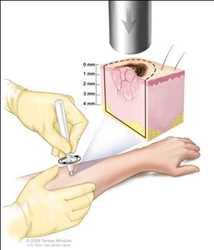Scientists Develop Stem Cell Model To Throw Light On Lung Cancer

A small cell lung cancer model based on a stem cell has been developed by Weill Cornell Medicine scientists. This will help understand how the initiation and the progression of the disease take place. Joyce Chen and associates have made this discovery about two genes that get suppressed and mutated.
Smokers are the primary victims of the disease. It becomes immune to chemotherapy and the like after a treatment of only a few months. New treatment methods were tried without success which made the US Congress and National Cancer Institute declare the cancer as recalcitrant.
The cancer sets in from lung cells known as pulmonary neuroendocrine cells (PNEC). Research until now has not found a way to make human embryonic cells transform themselves into PNECs. A differentiation process has been enabled by inducing cells akin to pulmonary neuroendocrine cells that are found in cultured human embryonic stem cells to change into lung progenitor cells. This was achieved by blocking the signaling pathway called notch pathway.
Tumor suppressor genes RB and TP53 in almost all the small cell lung cancer patients are subjected to mutations. Chen and the team have concluded that the RB undergoes an inhibition and PNECs are formed by the lung progenitor cells. These PNECs form a group of genes that could be mistaken for genes in SCLC tumors.
TP53 was next inhibited which made PNECs to begin to express genes. The genes prompt cell growth and the decaying of cells. Mice were tested with the cultured PNECs by intravenous administration.
Tumors started forming in the animals which made the team conclude that the initiation of disease was caused by the mutations of TP53 and RB. Member of the team, Harold Varmus, said in a report in the Journal of Experimental medicine that their research would be instrumental in determining how the development of early tumors into SCLCs. This will make it possible to test the cells for their resistance and susceptibility.


